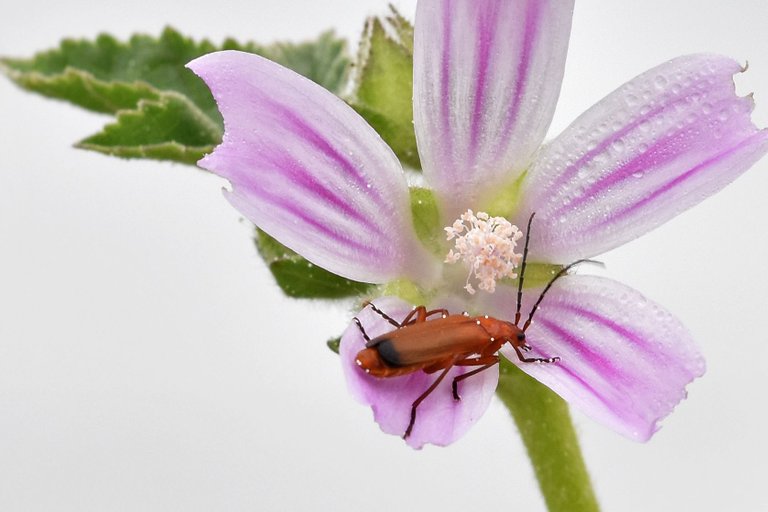
Every year around this time the lawns that are not constantly mowed fill up with spring blooming flowers, herbs and other weeds. And that of course attracts all kinds of insects that will feed on them or lay their eggs so the larva has something to eat too.
This red nasty fella is called Rhagonycha fulva or in easier words common red soldier beetle. It is common throughout Europe and I managed to find it on two types of plants.
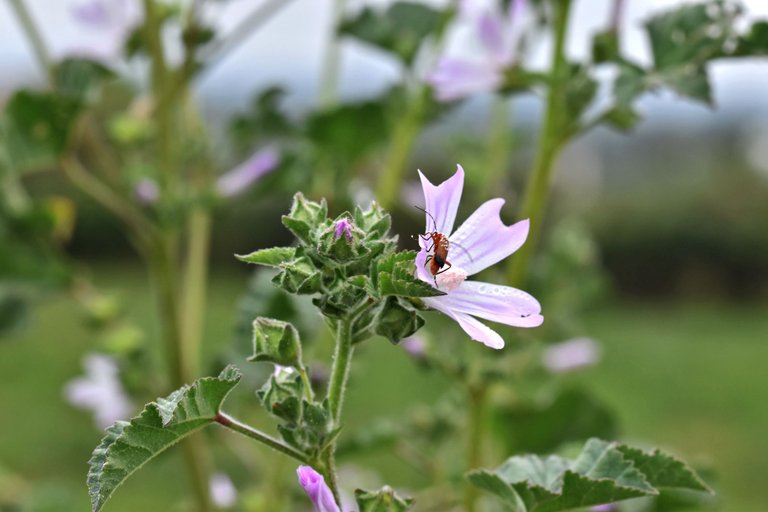
Adults feed on aphids, and also eat pollen and nectar. Larvae prey on ground-dwelling invertebrates, such as slugs and snails, and live at the base of long grasses. The adults, which are active between the months of June and August, spend much of their short lives mating and can often be seen in pairs.
source
This was was obviously feeding on the flower. You can see the tiny bits of pollen on the wings. A little paradise for them as I found many of them in a single plant. Multiply that my dozens of Malva bushes that grew along the road and you get hundreds of creepy little devils :p
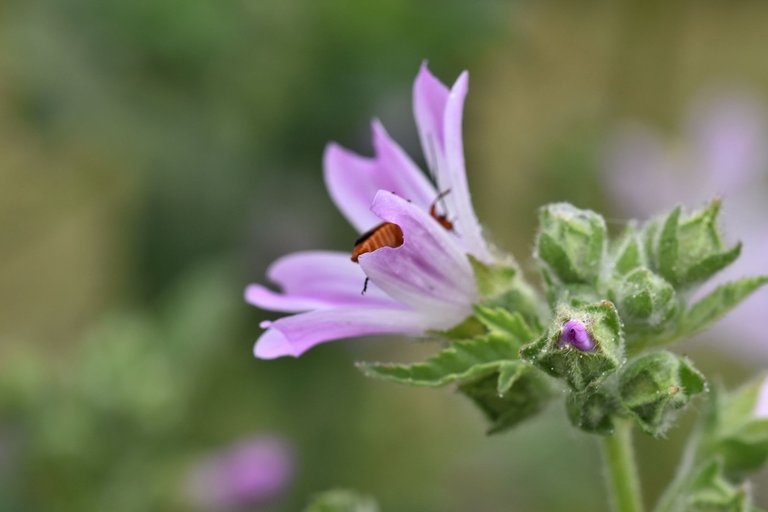
The second time I saw the on different type of flower and later in a year. The female was still busy feeding, the male was doing everything to disturb her.

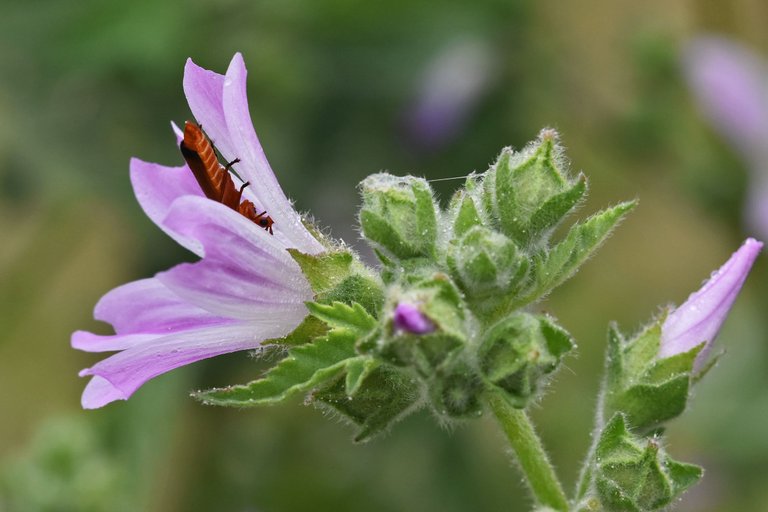
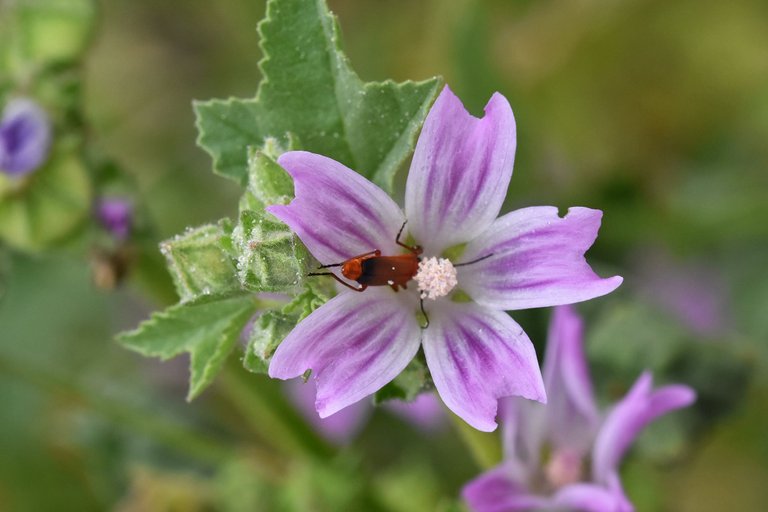
The flower you see here is Malva sylvestris. A common weed I would say that will grow to quite large size with big green leaves stems over 1m tall. I see it mostly along the roads on very sunny spots.
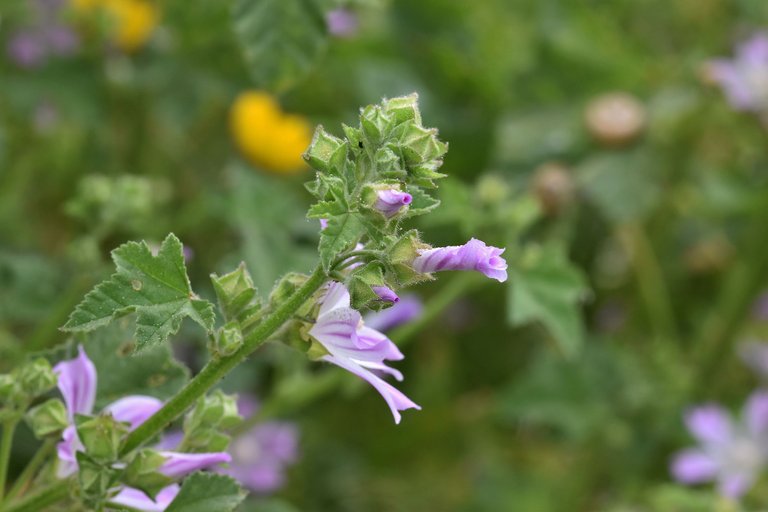
The blooming time starts around March and lasts till early fall so all the insects have plenty of time to eat and breed. The flowers will open gradually along the stem also constantly producing seeds (the seeds have very cool shape by the way, as a kid I though they were tiny bugs hidden in a plant :p. You know how some small caterpillars can curl up to a nice little circle? That's how they look like).
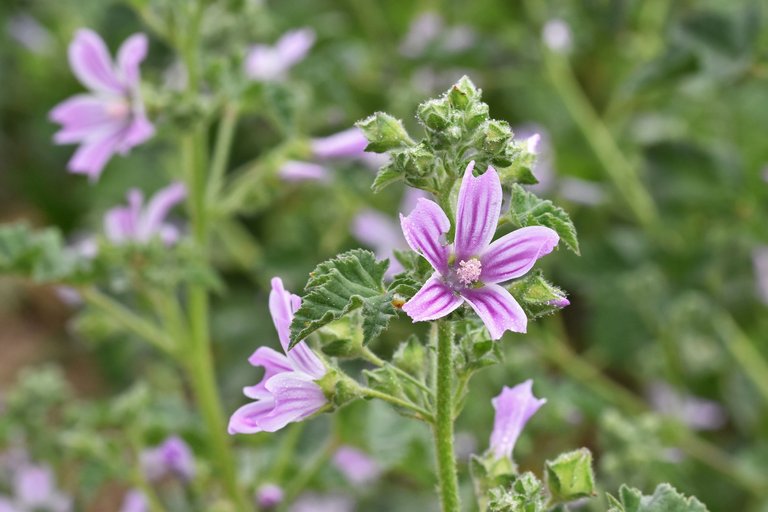
Fun fact: The plant is very much edible not only for bugs. The leaves are flowers are often used in teas.
It is quite often used in cosmetics as well.
Such a practical weed :)
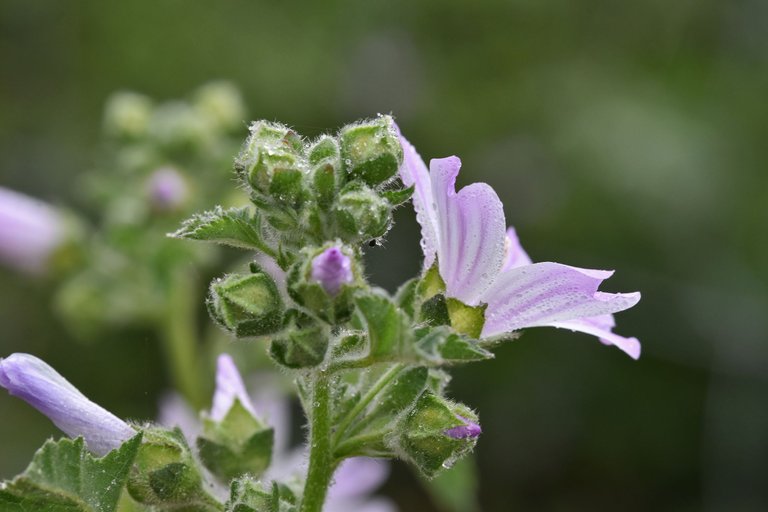

Shot with Nikon D5500 + Sigma 105mm lens
All photos and text are my own.

👍
Oh no no no!!!
You're spying on the intimate life of insects! 😂 😂
Hahha yeaaa bad bad me :p
A photo of a beautiful and natural flower that is very unique with the presence of insects in the flower. This is a unique moment. I am very aware that when taking photos it is difficult to find moments like this
Thanks! It helped that they were all over the place.
I will wait for your next best photo again. You are very talented in doing photography
This post has all the features of discovery channel, I loved today's photos, that white background in the cover image was such a delight with the contrast that was created.
Thanks!
I was shooting against cloudy (white) sky. It is a bit overexposed, but the background came out almost white this way.
a very fine name for a weed plant. lol
If I was a botanist, well I'm not.
if the weed isn't so edible, then I guess it doesn't have an effect on the devil beetle
Haha All weed plants sound very fancy. Its to confuse humans :D
Wow, everything looks so beautiful and full of natural peace.
Thank you!
It seems they are very happy to live in a bouquet of beautiful flowers
I bet they are :)
The rewards earned on this comment will go directly to the person sharing the post on Twitter as long as they are registered with @poshtoken. Sign up at https://hiveposh.com.
Very cool photography, I also often see insects in the flower.
Thanks :)
Beautiful! So little I know about the things that I pass by. It's amazing how everything is important on its own way.
I usually have no idea what I shoot :) Only later I try to look for the name and see what the plant (or bug) does. Some are quite surprising.